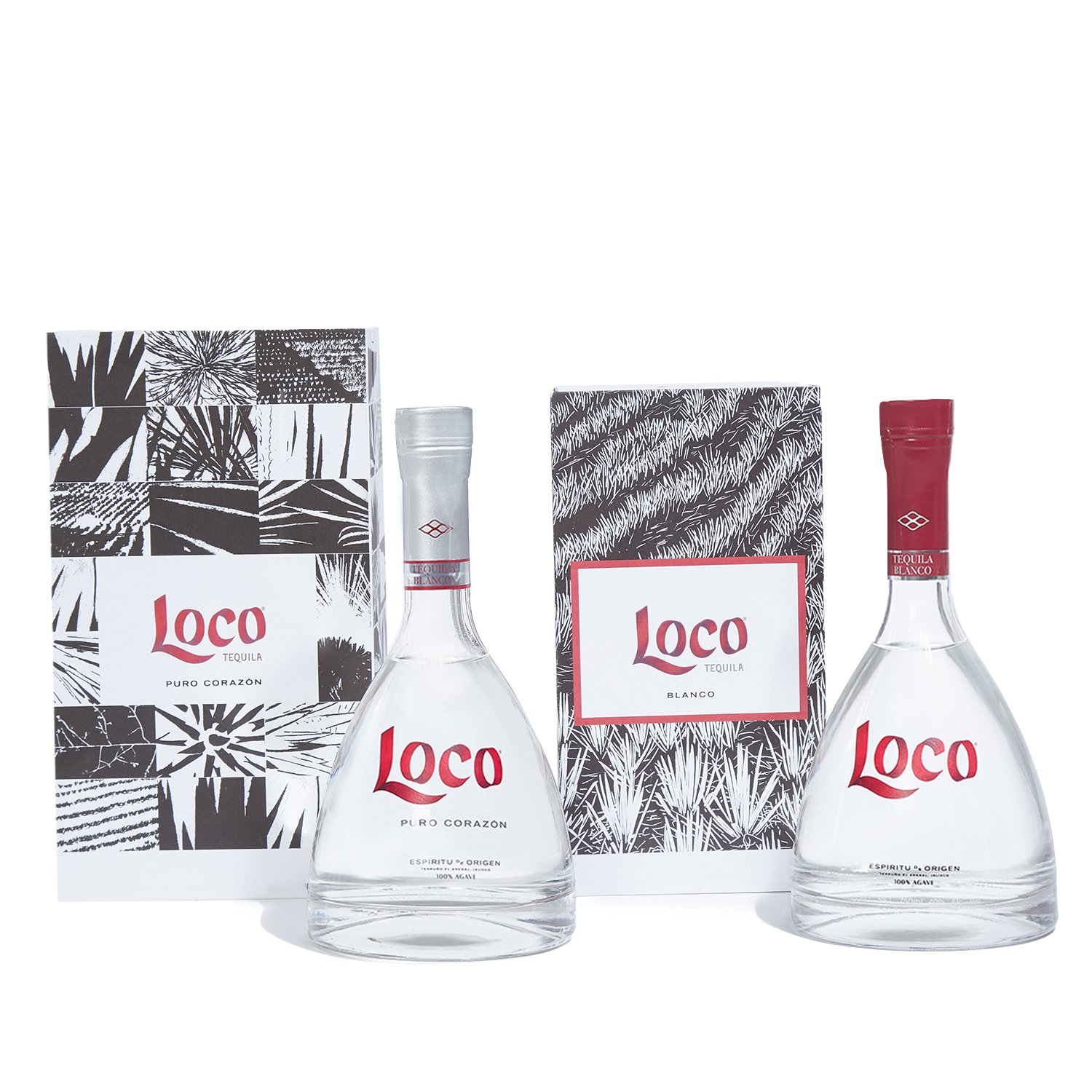Loco Tequila: A Luxury Agave Spirit Reaching Back in Time
“There is a very high level of artisanality, tradition, sophistication, and excellence in the world of tequila in Mexico, that dates back even more than a century,” says Juan-Pablo Torres-Padilla, cofounder of Loco Tequila. “It’s a pity that today, when you say ‘tequila,’ those aren’t the first words that come to mind.”
Loco Tequila Maestro Tequilero Alberto Navarro
Agave is Growing
Ironically, they may also not be the first words that come to mind when you hear the word Loco (“crazy”) paired with tequila. But this relatively new label from Torres-Padilla, co-founders Gabriel Roqueñí and Pedro Padilla, along with maestro tequilero Alberto Navarro is a serious (if luxe) product with an eye towards tradition. Over the past few years, a staggering number of tequila, mezcal and other agave spirit brands have appeared on the market. In 2022, tequila outsold whiskey in the U.S., and was on pace to surpass vodka, according to data from the Distilled Spirits Council and the IWSR Drinks Market Analysis.
Sweetness is Trending
But along the way, something weird has happened. In tasting after tasting, other drinks writers and I have noticed an increasing trend towards sweet notes in (unflavored) tequilas: hints of ripe banana, brown sugar, sweet vanilla, even cotton candy. During virtual tastings, we’re DMming back and forth about experiencing yet another “sweet” tequila. This trend goes hand-in-hand (and not coincidentally) with the rise in labels targeting nightclubs and older Zoomers / younger Millennials, along with an emphasis on high-tech processing designed to speed up and mass-produce the agave cooking and fermentation processes. Prior to this, quality tequila has traditionally emphasized either the grassy, herbaceous notes found in Lowland agave distillates, or soft tropical fruit notes from the Highlands around Jalisco and Guanajuato. Hints of pepper, bright citrus and minerality often bring the tequila sipper back for more. These days, though, the money lies with younger drinkers in party spots like Miami, Vegas, and Dubai. As a rule, they prefer a softer, sweeter flavor profile. Or at least that’s what the marketers have decided. “So many newcomers think tequila should be a Cristalino, or party shot, frozen or whatever,” says Navarro. “It’s great that those bring in new drinkers, but we’re hoping they’ll want to learn what tequila can really offer.”
In Praise of Blancos
Loco Puro Corazon y Blanco
Enter Loco and its co-founders who, beginning in 2012, sought to dip back into history. “100 years ago, there weren’t reposado and añejo aged tequilas,” says Navarro. “There were only unaged blancos: bad, average, and excellent.” In an attempt to compete with Europe (and to lure wealthy Mexicans away from Scotch and Cognac), aged tequilas began to hit the market in the second half of the 20th century, and fluoresced in the past 20 or so years. At the same time, thanks in part to a rising popularity into the U.S. after World War II, the number of mediocre blanco tequilas on the market continued to multiply. That began to reverse, somewhat, when quality brands like El Tesoro hit the U.S. in the late 1980s.
In all of that growth and turmoil, a lot of traditional methods of making tequila fell by the wayside, says Torres-Padilla (a money management CEO by day). Cheaper, time-saving techniques, like steaming the agave piña in diffusers, harvesting younger plants, and mellowing the finished product with legal additives have become increasingly popular among large-scale tequila producers. According to Torres-Padilla, aging in oak “gets overused to hide the defaults of many blanco tequilas. The result is that you very rarely have a blanco that has power, but also inherent smoothness and elegance, and is also high-quality.”
Tequila that Actually Tastes Like Agave
The result of a decade’s work and a team of over 50 people, Loco strives to be that rare tequila, according to Torres-Padilla. On the nose it’s herbaceous, with notes of agave, soft white pepper, and a hint of lemon. On the palate those same notes come across, with bright clean spice on the mid-palate, a medium-bodied fullness, yet it’s crisp with a bright minerality on entry without any brashness or alcohol harshness up front and just a hint of tropical fruit. The lingering finish is one of pepper, agave and a distinct lack of green bell pepper which sometimes taints (to me anyway) a good tequila’s finish. “It’s a legacy tequila that smells and tastes like agave,” insists Navarro. And indeed, in a blind taste test against two popular high-end brands, it stands out as decidedly not “sweet.” The sweetness on one of those competing brands, of which I’m a fan, was a big surprise for me. I later tested it later against my own bottles, and they were a match.
But why “Loco?” Sharing the brand’s name via social media with folks in the industry, found a lot of people disappointed, given its longtime association in the U.S. with parties, zaniness, and cultural appropriation by young revelers. However, Torres-Padilla says it’s not simply to attract notice from a nightlife crowd but pays tribute to artists and innovators who think outside the box “to make humanity move forward. Think Galileo, DaVinci or Frida Kahlo, ‘crazy’ geniuses who change how humanity does things in a positive way.”
Combining Old and New Techniques
Loco Tequila Jimadores preparing double jima before entering the oven
The production process is a combination of ancient and modern techniques, with an emphasis on producing quality rather than creating shortcuts, according to Navarro. Loco sources from the lowland valleys in El Aranel and agave piña are shaved close in the field to remove as much green skin as possible to reduce bitterness. A secondary shaving is done and piña are cut in half before baking in traditional masonry ovens. Two extraction techniques are used: The traditional stone wheel called a tahona and a rolling mill, meaning that some of the agave liquid goes into fermenting tanks with agave fibers, and some goes in as just the juice. A variety of fermentation tanks are also used, including wood, cement and stainless steel. Navarro says this unusual combination of processes achieves their goal of “highlighting terroir, legacy, and an ultra-premium tequila, something that’s very difficult to bring together.”
Pot stills (stainless steel with copper coils, each under 3,000 liters) are used for distillation to preserve maximum flavor through minimum distillation runs. For the core blanco, heads and tails are cut, then reintegrated into later distillate batches. This is a common technique for most distilled spirits, allowing producers to re-use and maximize their liquid, but with some risk of compromising the overall quality of the finished product. With Loco’s more expensive Puro Corazon expression, heads and tails are discarded rather than being re-distilled, something Navarro says is “unusual in the whole spirits industry.” For Puro Corazon, “we focus only on the heart of the distillation. The result is a super high-end, quality tequila. It has all the richness, flavors, and attributions of fine tequilas, and is extremely elegant, smooth, and easy.” I should note, I didn’t get to taste the Puro to confirm, but I’ll wager it’s tasty.
A Unique Take on Age
LOCO Tequila ÁMBAR
Though the Blanco and Puro are unaged, a third product, Loco Ambar takes the Blanco and drops it into oak barrels for eight to 10 months. Rather than simply use ex-bourbon casks (the favorite for most of the tequila industry), Navarro ages in a combination of four barrel types: ex-Irish Whiskey that then holds a stout for a few months prior to the tequila, ex-Pedro Ximénez sherry, exp Oporto port, and New French Oak. The result is officially a reposado, but has flavor characteristics of an añejo. An intriguingly complex nose features agave still, overlain by dried apricot and dried apple, toast, cocoa, citrus flour, black pepper, caramel and vanilla. On the mouth it’s a virtual explosion of flavor, yet well balanced. Hints of toasted bread, pepper, menthol, dried fruit and a hint of salinity overlay the core herbaceous notes of the agave.
Additive Free
Loco Tequila Jimadores harvesting agave plants at Loco Tequila fields
Just as important, Loco contains none of the several legal additives tequila brands can use to make their product taste “smoother,” sweeter, look more consistent, or have a fuller mouthfeel. Among the legal additives Loco doesn’t use: glycerin (used for body and sweetness), caramel coloring (for visual consistency in aged products), oak extract (to enhance the perception of aging, and mellow out harshness), and jarabe (a sugar syrup to combat brashness). The brand has been visited, inspected and certified additive-free by Tequila Matchmaker. Their certification process is largely considered intensive and well-respected by the industry. That weird banana / candy / cotton candy “flavor” that comes across in many contemporary tequilas? Navarro credits that to the aggressive extraction and hydrolysis techniques associated with autoclaves or diffusers, a quick-cooking process using enzymes with steam heat or no heat at all. “It’s not bad or good, it’s just different.”
Adding to the historic street cred, the brand is renovating an old hacienda to serve as their future distillation headquarters. Hacienda la Providencia’s roots date to the mid-1700s, and was the primary distillery in the region in the 1940s. “We’ve restored some of the fermentation vats, and rescued an old yeast strain from back in those days,” says Navarro. The company has installed a traditional tahona stone to crush some of agave and extract the liquid. The team is also harvesting some of its agave grown in traditional double rows and circular patterns, evoking ancient MesoAmerican Guachimontones structures.
“We’re going back to the old methods, but with high-efficiency control, focused on the quality, not the costs,” says Navarro. “People said, ‘you guys are crazy.’ It was very clear to us we were happily loco doing things outside the box.”
A Meteoric Rise & A Premium Price
Loco, which Torres-Padilla says has become the fastest growing brand in Mexico over the past three years, launched in California last fall. It’s currently expanding to other states and is available online. The product isn’t cheap, but the team insists that the expense comes from meticulous harvesting and production techniques, not simply because it’s meant to be a fancy, pricey tequila. It’s produced at Tequila Cascahuin (NOM 1123), which also makes a number of other well-regarded—and less expensive—labels, mostly distributed in Mexico. Loco Blanco (40% ABV) runs about $135. Loco Ambar (40% ABV) is $250 and Loco Puro Corazon (40% ABV) is $350.
In a world where extra-aged tequilas can now be purchased for under $100, it may be a tough price point to introduce a new un-aged product at. But on the other hand, if it’s marketed to people willing to pay premium prices, AND it tastes great without additives? Well, there are worse ways to spend one’s dollars on an evening out.





